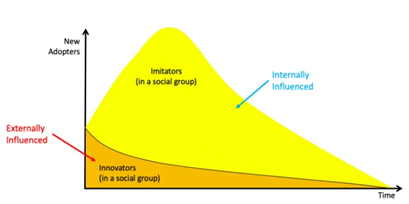Internet Diffusion Rate among ASEAN Countries
DOI:
https://doi.org/10.69478/JITC2020v2n2a01Keywords:
ASEAN, Bass Model, Internet Adoption, Internet Diffusion Rate, S-shaped curveAbstract
This paper examines the rate of Internet diffusion among the Association of Southeast Asian Nations (ASEAN) countries during the period 2001-2018. The Bass diffusion model was used to estimate the total number of potential adopters, the coefficient of innovation, and the coefficient of imitation. This paper uses the International Telecommunication Union (ITU) 2001-2018 dataset to study the rate of Internet diffusion. The results show that Internet diffusion among ASEAN countries was characterized by different S-shaped curves of the diffusion process. The estimated diffusion curves provide evidence that high-income countries in the ASEAN have higher diffusion rate as compared to the lower-income countries. Further, the study found that the country that has the highest rate in the point of inflection is also the country that has the lowest rate of Internet diffusion. The results also indicate that among the 10 members of the ASEAN countries, four of which have reached their peak of adoption before 2018, and two of which have reached the saturation point of the diffusion process, and one of which is continuously dominating since the launch of Internet up to the present while the rests are closely following the path made by high-income countries.

Downloads
Published
License
Copyright (c) 2020 Josie B. Quiban

This work is licensed under a Creative Commons Attribution-NonCommercial 4.0 International License.



